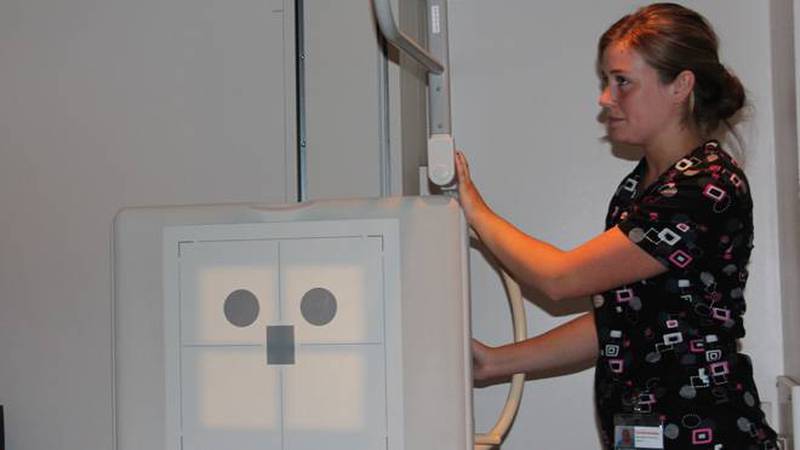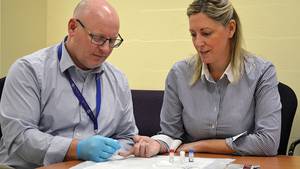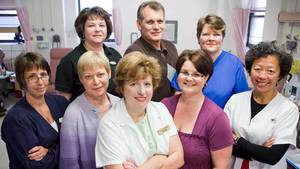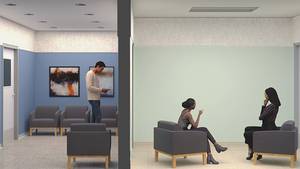Ready for anything |
|
While there was rarely a typical day during Katrina’s clinical, her eight-hour shift would always begin with meeting the radiological technologist she would be working with. If she wasn’t in the emergency room department, she would be handed her first case of the day, following the same protocol as technologists, who receive their cases as the patients arrive. She would read the case over to determine which body part she would need to focus on and what protocols needed to be followed. When it was time for a patient’s appointment, she brought them to the room where the procedure was performed. After explaining what was going to happen, she would position the patient properly for the procedure, and ensure a quality diagnostic image was produced for the radiologist to examine. Katrina quickly learned radiological technologists need good people skills. Patients were sometimes apprehensive about the procedure and needed reassurance. She also needed to make patients as comfortable as possible, especially when she had to place their body in an awkward position to take the image. “You have to have a smile on your face,” says Katrina. “Sometimes you have to help people relax in order to do an exam. All it takes is some patience and good people skills.” In the emergency department the pace was a bit different. Working there during the summer, Katrina did a lot of chest X-rays and saw everything from bike and lawn mower accidents to one patient who came in with fingers missing from a workplace accident. She has also X-rayed patients with little mobility in their limbs. Her challenge is to position the patient without causing more pain and still get the pictures the doctors needed. When asked if she is looking forward to continuing the program and her next clinical, Katrina flashed one of her big smiles and said, “I can’t wait!” |
Katrina Boudreau learned quickly during her first clinical at the QEII Health Sciences Centre that no two days would be the same.
Now in her second year of the Radiological Technology program at Dalhousie University, Katrina completed her first clinical in July 2013. During her eight weeks at the QEII, she not only spent time in the operating room, but worked in the emergency room department, positioning patients for X-rays and taking exposures.
“In ER, I realized that you can’t be afraid to get your hands dirty. You have to adapt to all different situations,” says Katrina. “I like being able to modify positions to get the X-ray and use critical thinking.”
Working every shift alongside a different radiological technologist, who oversaw her and gave help when needed, Katrina’s work at the hospital was closely monitored. The technologists reported back to her teachers and she was evaluated on all aspects of her work – from patient care to professionalism.
“I found it nice to have different techs every day. They give you different pointers,” says Katrina.
Just like the QEII’s radiological technologists, university students such as Katrina work in a variety of areas in the health centre where X-ray demands are high. By working closely with not only technologists, but patients and doctors as well, Katrina knew she was helping to deliver the best patient care. At the same time, she was receiving a top learning experience at the largest teaching hospital in Atlantic Canada.
“Clinical helps you apply the knowledge of what you learn in the school year,” says Katrina. “Some of the stuff you can’t learn in a textbook.”
Dalhousie University’s four-year radiological technology degree program is designed to provide students with hands-on clinical experience to support the classroom teaching, says Catherine Gunn, an adjunct lecturer in the program. Each term students spend time in a hospital somewhere in the Atlantic region, many of them within the QEII.
Katrina, who is from the Yarmouth area, thought using X-radiation to create images of a patient’s anatomy to help diagnose an injury or disease would be a cool job, so she enrolled in Dalhousie’s program after completing one year of a science degree.
Radiological technologists, also known as medical radiation technologists, X-ray technologists or radiographers, use specialized equipment to perform different types of imaging procedures on the body’s systems, including radiography, computed tomography (CT), mammography and bone density.








